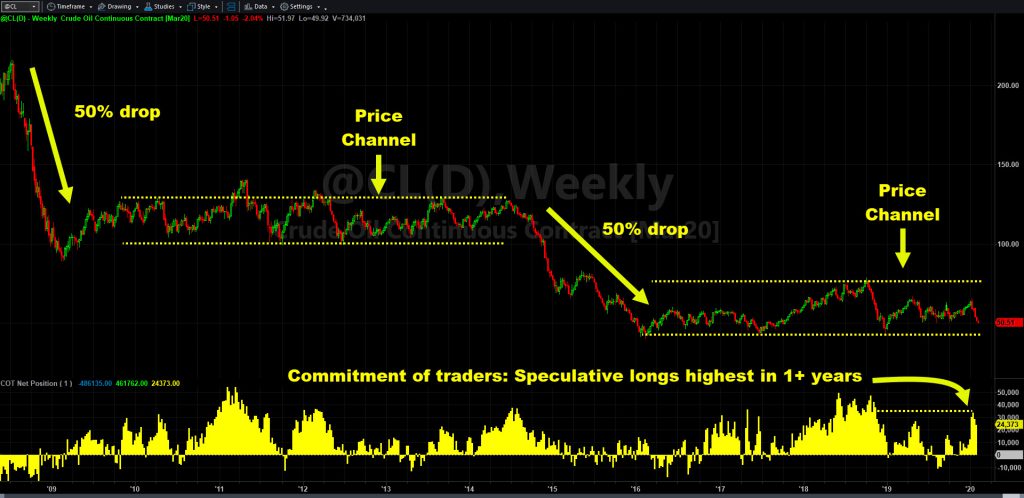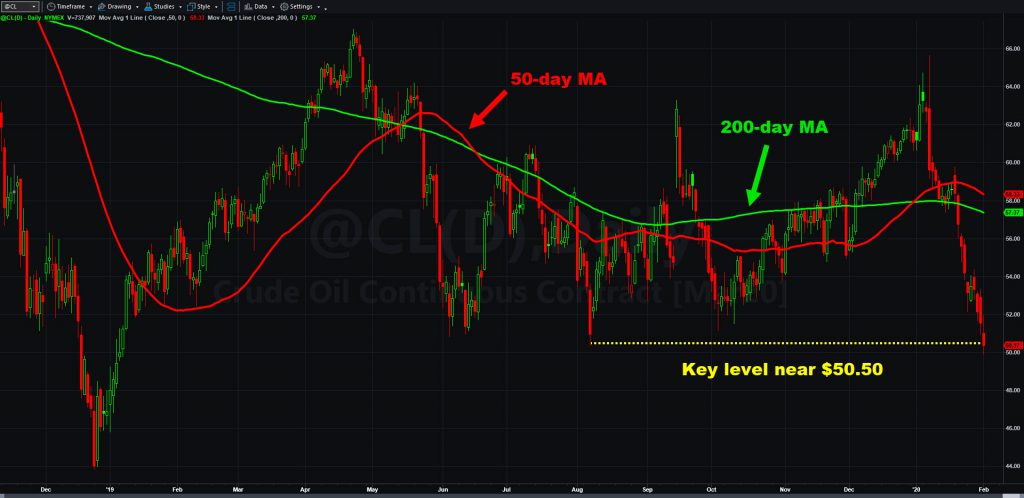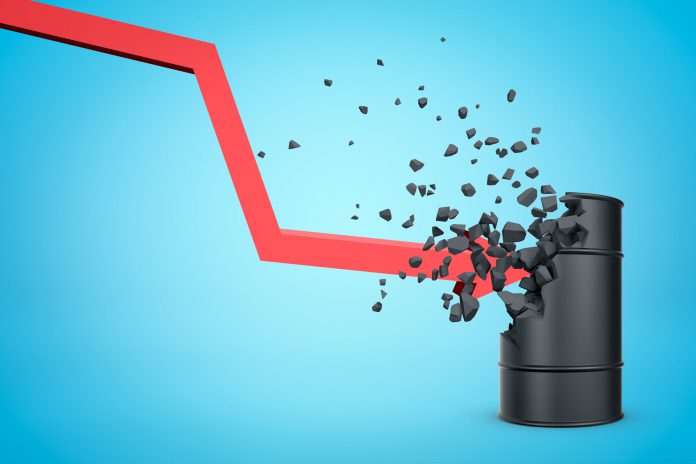Coronavirus has caused a lot of fear in the market, and it comes at an especially bad time for the energy sector.
Crude oil already had a glut of supply because of rising production in the U.S. and Russia. Demand was flagging before the disease broke out in China, and now it’s coming under even more pressure as airlines cut flights and governments restrict travel.
That combination of news has driven crude oil futures (@CL) from the top of their recent range all the way to the bottom near $50.50. Will it bounce again, or break support?
This weekly chart may give buyers little sense of confidence. @CL had huge drop — roughly 50 percent — between July 2008 and February 2009. It then moved sideways for five years before breaking lower.

Prices proceeded to get cut in half again before stabilizing in early 2016. They’ve consolidated ever since. That may create the potential for its longer-term downward trend to continue.
Commitment of Traders
The government’s commitment of traders report (COT) also shows that speculative traders have been bullish. They were long roughly 34,000 contracts in mid-January, the highest level since markets crashed in November 2018.
COT data doesn’t have a ton of short-term importance. But it’s often a useful contrary indicator because it shows where the least informed traders are positioned. Those “speculative longs” can also become panicked sellers if prices drop.
Sentiment toward the industry has also gone from bad to worse. Last week energy giants Exxon Mobil (XOM) and Chevron (CVX) fell on weak results. Today, Goldman Sachs cut XOM to sell on the risk of more downside in oil. Citi also lowered its price target on @CL to $47.
The Impact of Lower Oil Prices
Energy stocks obviously have the most at stake. But selloffs in oil can hurt the broader market because oil is economically sensitive. When it crashes, people start worrying about a recession.

Talk about a recession, in turn, hurts financials, industrials and retailers. It also pushes down interest rates, which can lift housing stocks and precious metals. Low rates can also be positive for technology companies like software makers that trade at higher multiples. It’s less positive for economically sensitive chip stocks.
There are some potential catalysts in the near-term. The Wall Street Journal reported today that OPEC may announce an emergency production cut of 1 million barrels per day. Timing isn’t clear but it could trigger a bounce.
The U.S. Energy Department will also report weekly inventories at 10:30 a.m. ET on Wednesday.
In conclusion, anticipating breakdowns is difficult and we’re not trying to make any predictions. This post is simply intended to highlight a potential risk beyond coronavirus. Given its longer-term trend and fundamental negatives, investors may want to be careful of buying the next dip in oil. It could be the next shoe to drop.























